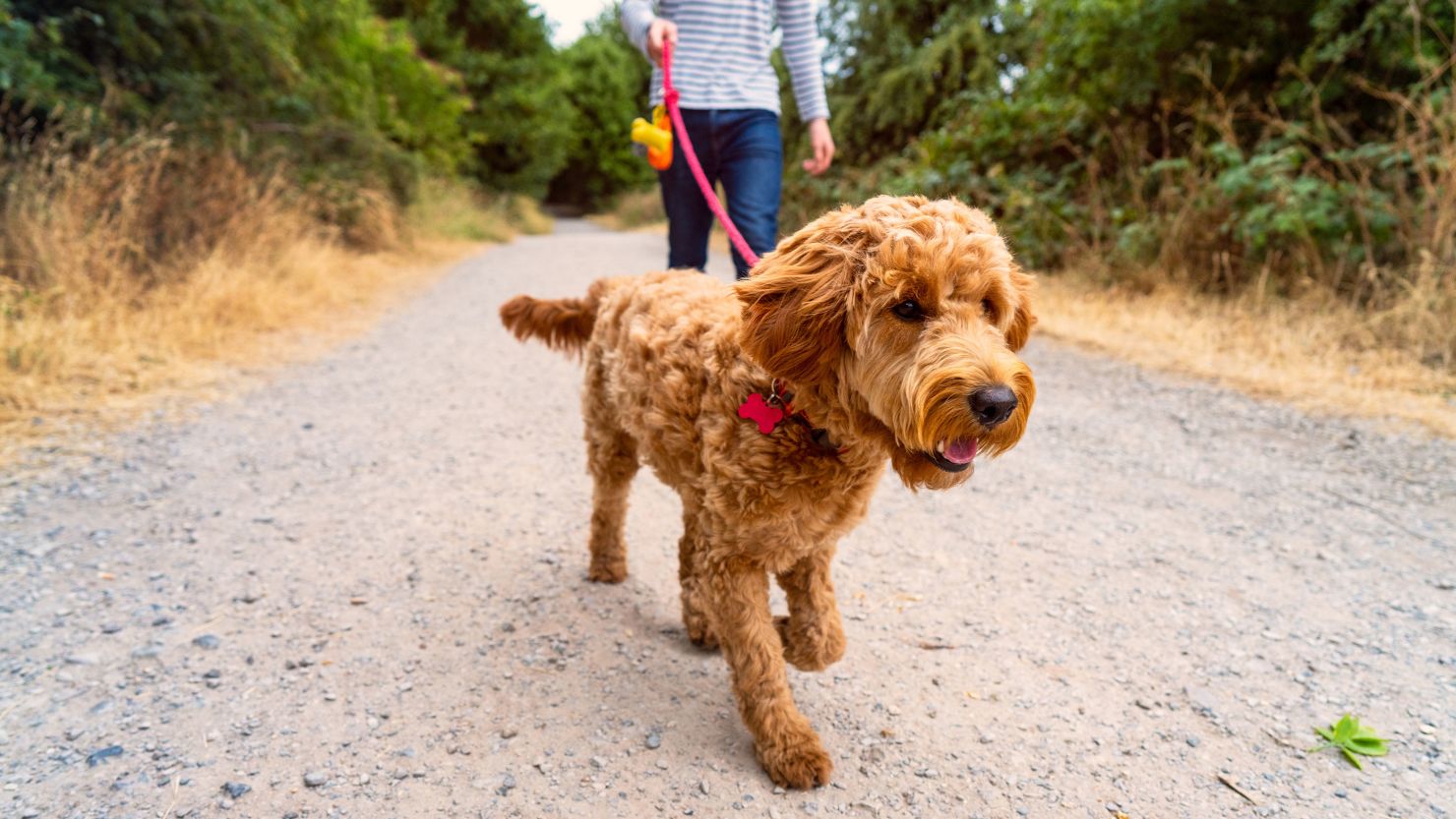Editor’s note: Before beginning any new exercise program, consult your doctor. Stop immediately if you experience pain.
If you’re struggling to start or maintain a regular exercise regimen, the answer may be sitting faithfully at your feet.
Walking your dog is a fantastic way to get in shape, and it benefits both you and your pooch.
Some 69 million US households are home to at least one dog. Yet many dog owners never take their pets on a walk, or do so infrequently. Additionally, while 61% of dog owners walked their pup at least 10 minutes at a time, according to a 2011 survey in the Journal of Physical Activity and Health, only 27% walked their dog 150 minutes per week — the US Centers for Disease Control and Prevention’s recommendation for adults’ weekly, moderate-intensity physical activity.
If you’re among those who are not that physically active, use your pooch as inspiration to head outside and start moving.
“If you can keep your dog happy and healthy at the same time that you’re keeping yourself healthy and bettering the dog-man bond, that’s great,” said Dr. Jerry Klein, chief veterinary officer with the American Kennel Club. Canine obesity is the No. 1 preventive health problem in American dogs, Klein added.
Various studies indicate those who walk their dogs are more than 2.5 times as likely to achieve moderate-intensity physical activity, according to a 2015 journal article. That’s one reason the American Kennel Club created the AKC Fit Dog program. Any dog owner who walks their pet at least 30 minutes five times per week for at least three months receives a free magnet. You’re also eligible if you walk your dog at least 15 minutes 10 times per week for a minimum of three months.
As with humans, regular walks are crucial for a dog’s mental and physical health. “Getting your dog out in nature, getting fresh air and sunlight, is just as beneficial for dogs as for people,” said Dr. Victoria Tomasino, owner and medical director at GoodVets Boynton Beach and GoodVets Delray in Palm Beach County, Florida. “It awakens the senses in both parties.”
This combination of mental and physical stimulation can also help quash problematic canine behaviors. “Most dogs are bored to death,” said Dawn Celapino, founder of Leash Your Fitness, a San Diego-based business where clients and their dogs work out together. “They need mental stimulation and bonding with their owner, but a lot of people don’t realize that.”
What to know before heading outside
Before grabbing a leash, keep some things in mind, Klein said. Your dog should know basic commands such as sit, stay and come. Make sure to slowly increase your walking time and mileage, as dogs need to acclimate to new levels of exercise just as humans do.
Flat-faced breeds such as pugs have breathing issues and can’t do a lot of high-intensity or lengthy workouts, while a vet should sign off on any new activity for older dogs. All breeds can struggle with excessive heat or cold, too, so always check the weather.

“You also have to be able to read your dog,” Klein said. “If your dog isn’t cooperating or doesn’t seem interested in a walk, try to find something different.”
Tomasino agreed that not all dogs enjoy walks. “You see quite often that dogs who are supposed to be high-energy prefer to be couch potatoes,” she said. “It comes down to personality, and you have to respect that.”
Thankfully, there are plenty of other ways to be active with your pooch. You can hike, swim, bike, in-line skate , play Frisbee or do circuit training with your dog. There are herding and retrieving events, both organized and competitive, that mimic the activities certain dogs were bred to do. You can harness yourself to a larger-breed dog and cross-country ski together, a sport known as skijoring, or try canicross. Also known as urban mushing, it involves attaching yourself to your dog via a waist harness and bungee leash, then going for a run.
READ MORE: Sign up for CNN’s Fitness, But Better newsletter series. Our seven-part guide will help you ease into a healthy routine, backed by experts.
Start slow and prioritize safety
No matter the exercise, be mindful of your pet’s health and safety. Biking, for example, is much easier for the human who is peddling than the dog that’s running. “I see people riding bikes with a dog, and the dog is gasping for breath and limping,” Tomasino said. “But the person is so focused on biking, they’re not paying attention to their dog.”
She also nixed using retractable leashes during higher-speed activities such as in-line skating. “With retractable leashes, you have no control over that dog,” Tomasino said. “If another dog is coming at you, for example, that’s dangerous for you and the dog. You need them close to you so you can correct and change course if need be.”
Is sleeping with your pets good for them?
Remember to be patient when your dog is learning a new activity, too. “Start slow,” Celapino said. “They might not understand what you want them to do, and they need to work up to things. But don’t discount your dog. Dogs can do a lot of things.”
Celapino cited her canine-human fitness classes as an example. During a recent session at a local park, dogs had to sit while their human was performing an exercise, then both ran a lap around the park. “We’re constantly moving, then stopping in my classes, which makes your dog have to think about everything they do,” she said. “That’s what tires them out.”
No matter the activity you land on, always tune into your pet. “Exercising is really good bonding for you and your dog, as long as you stay off your phone,” Celapino said.
Klein agreed. “What dogs enjoy most is spending time with their people,” he said.
Melanie Radzicki McManus is a freelance writer who specializes in hiking, travel and fitness.

















